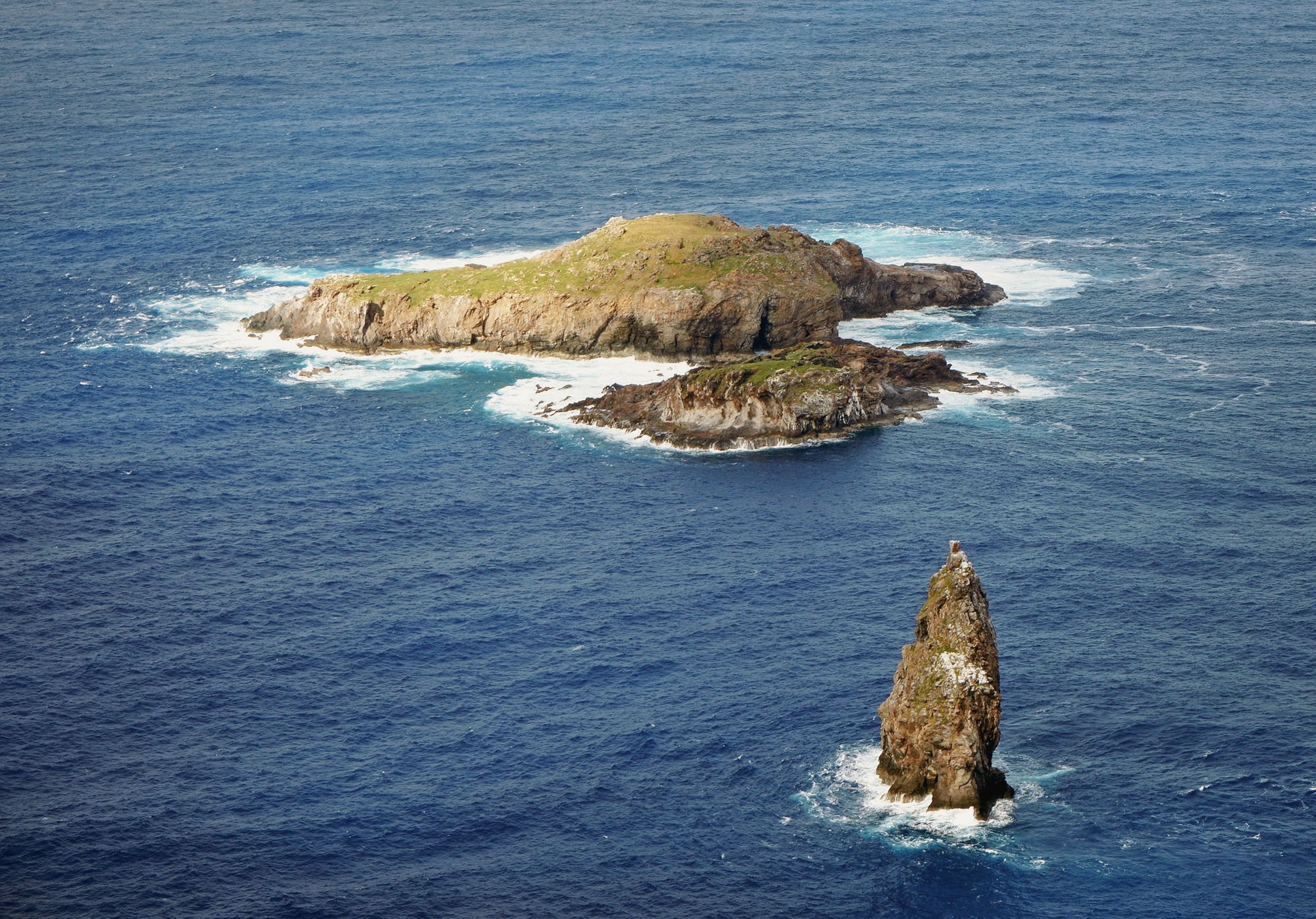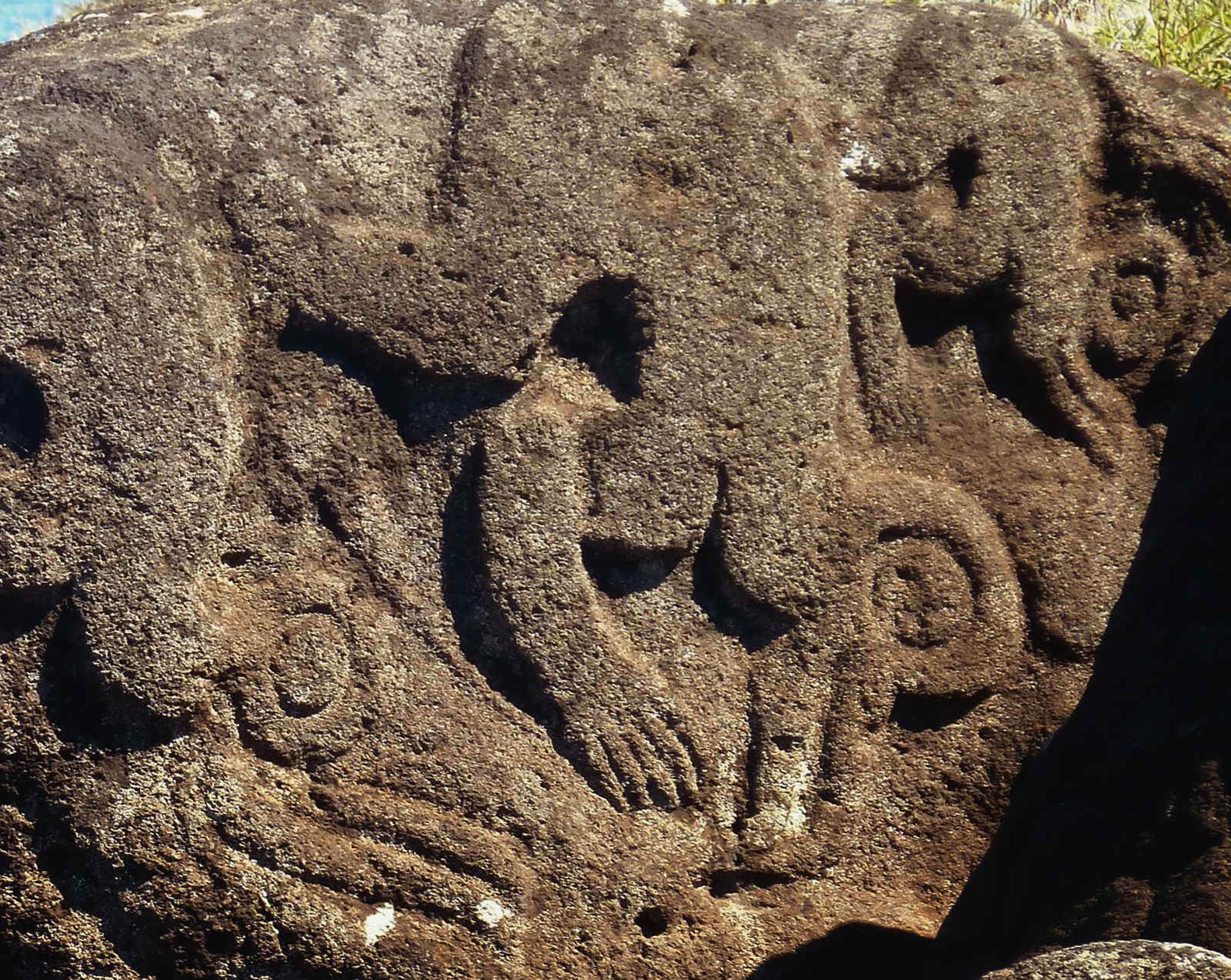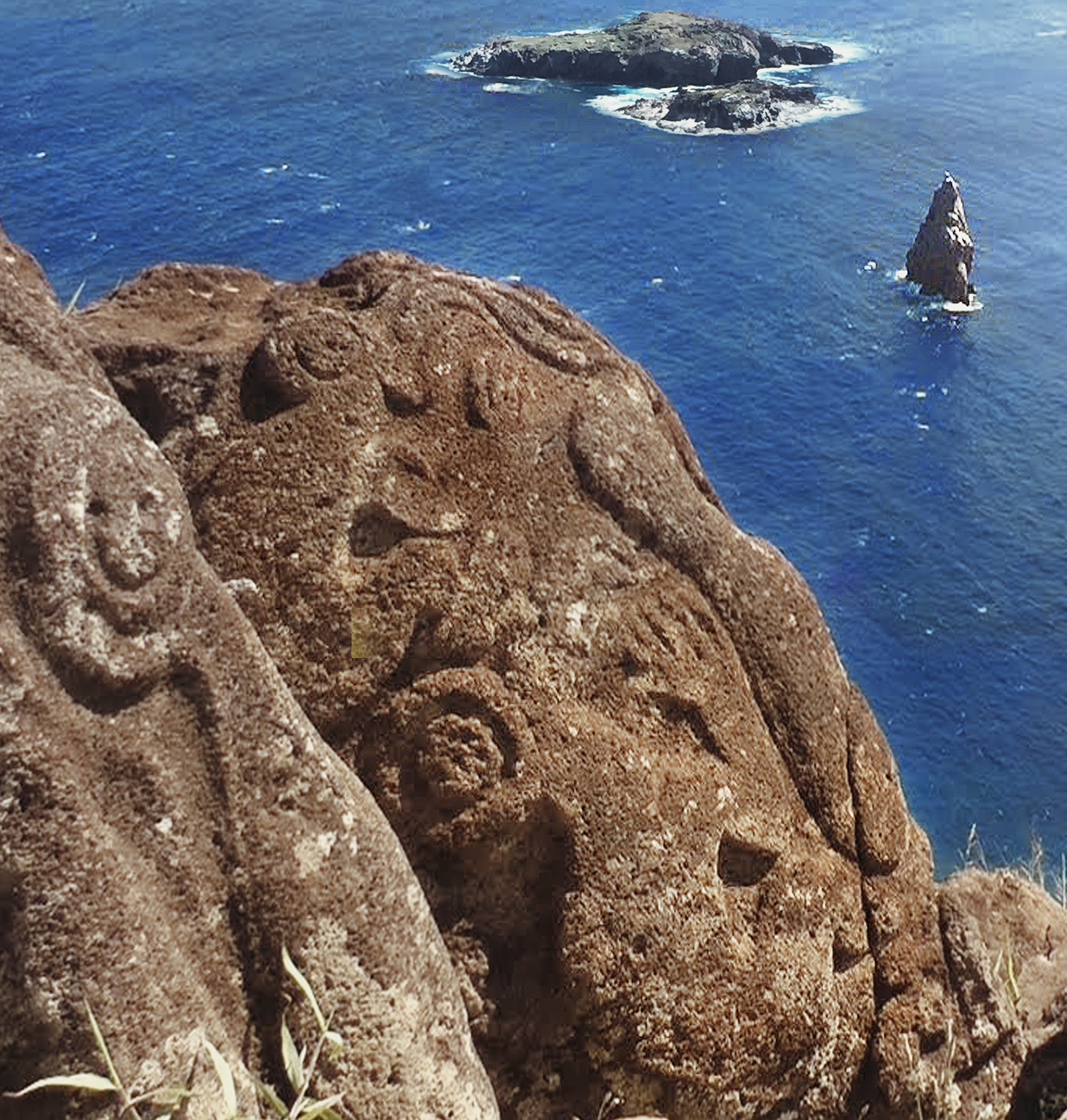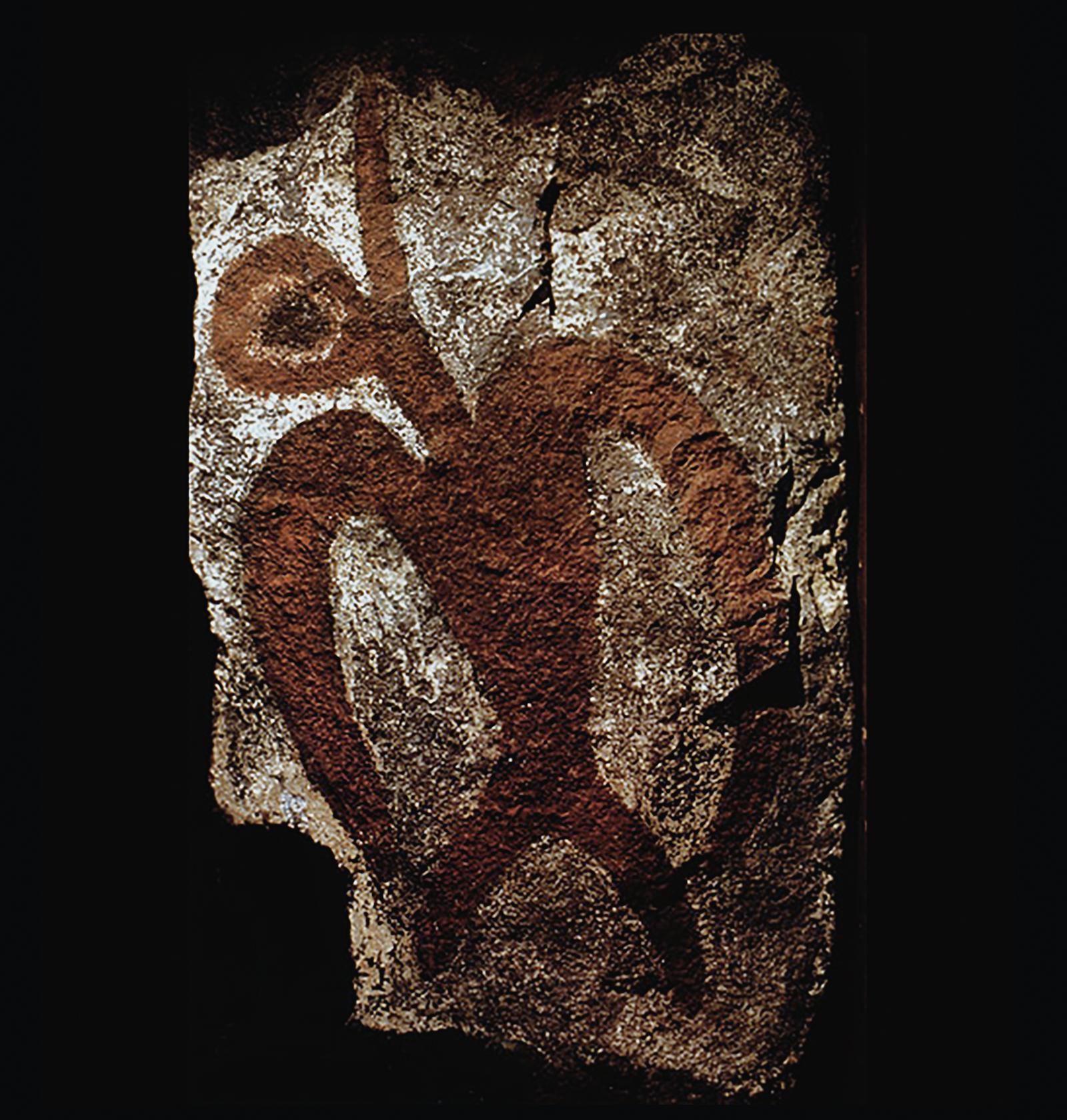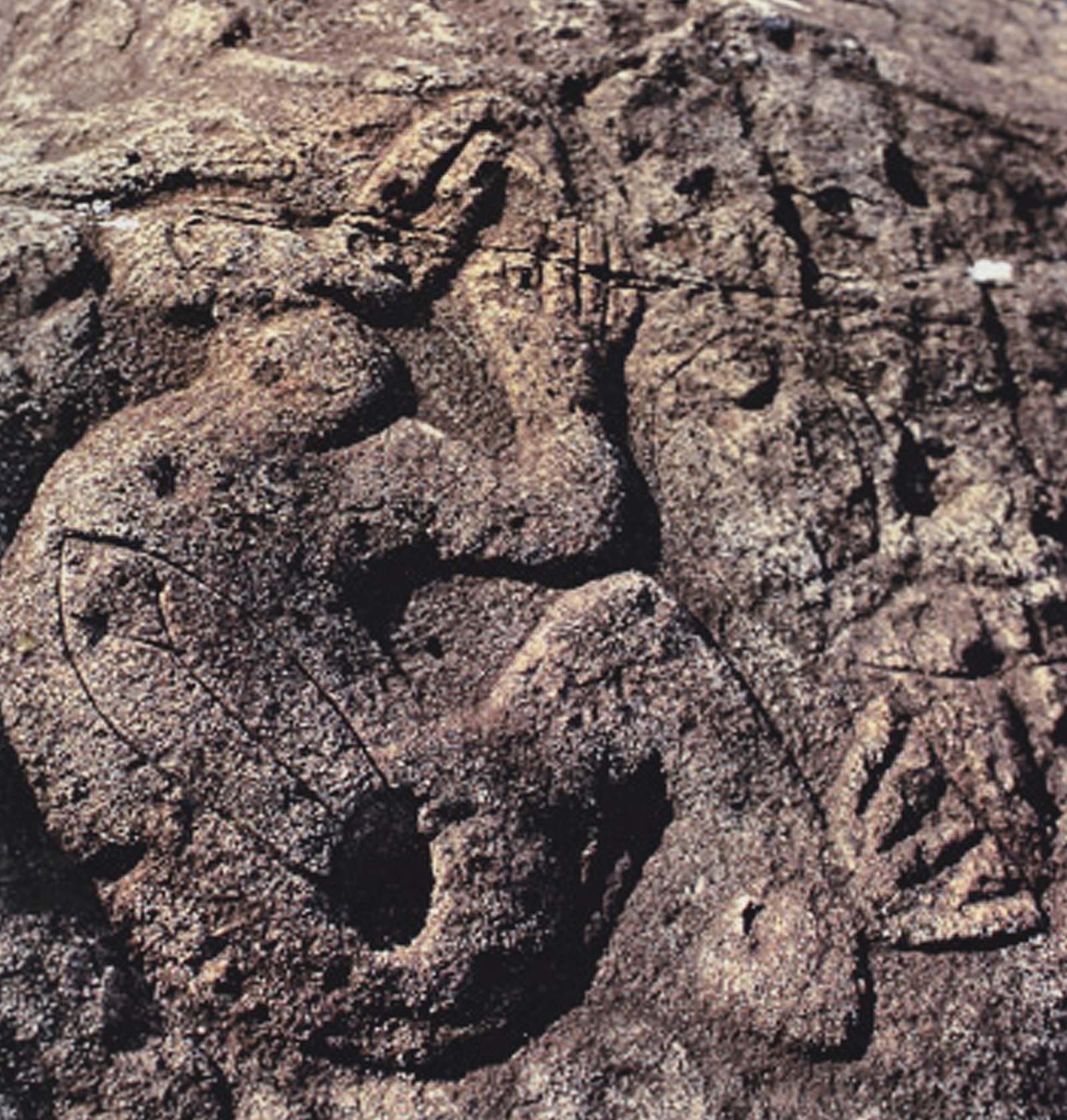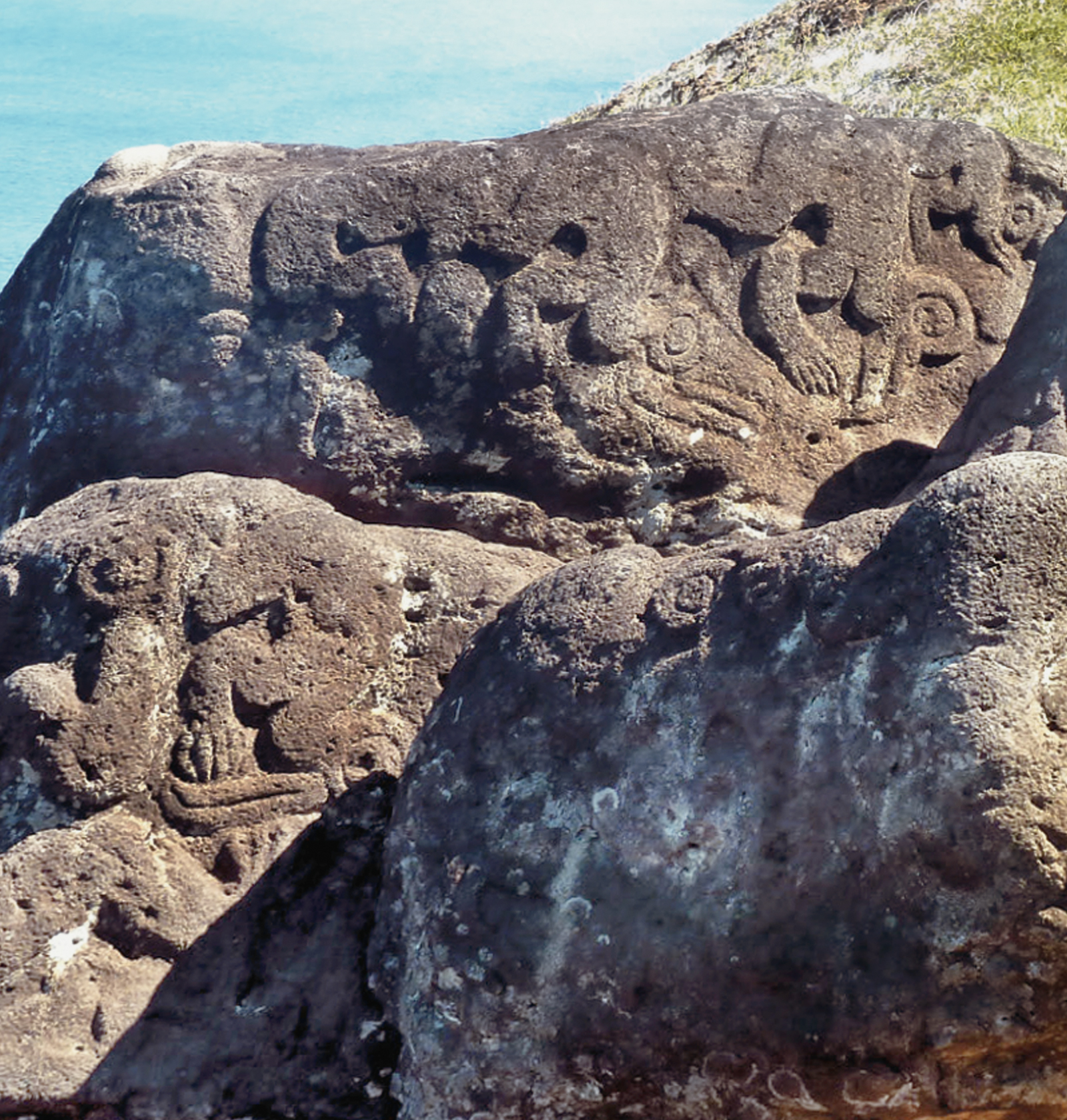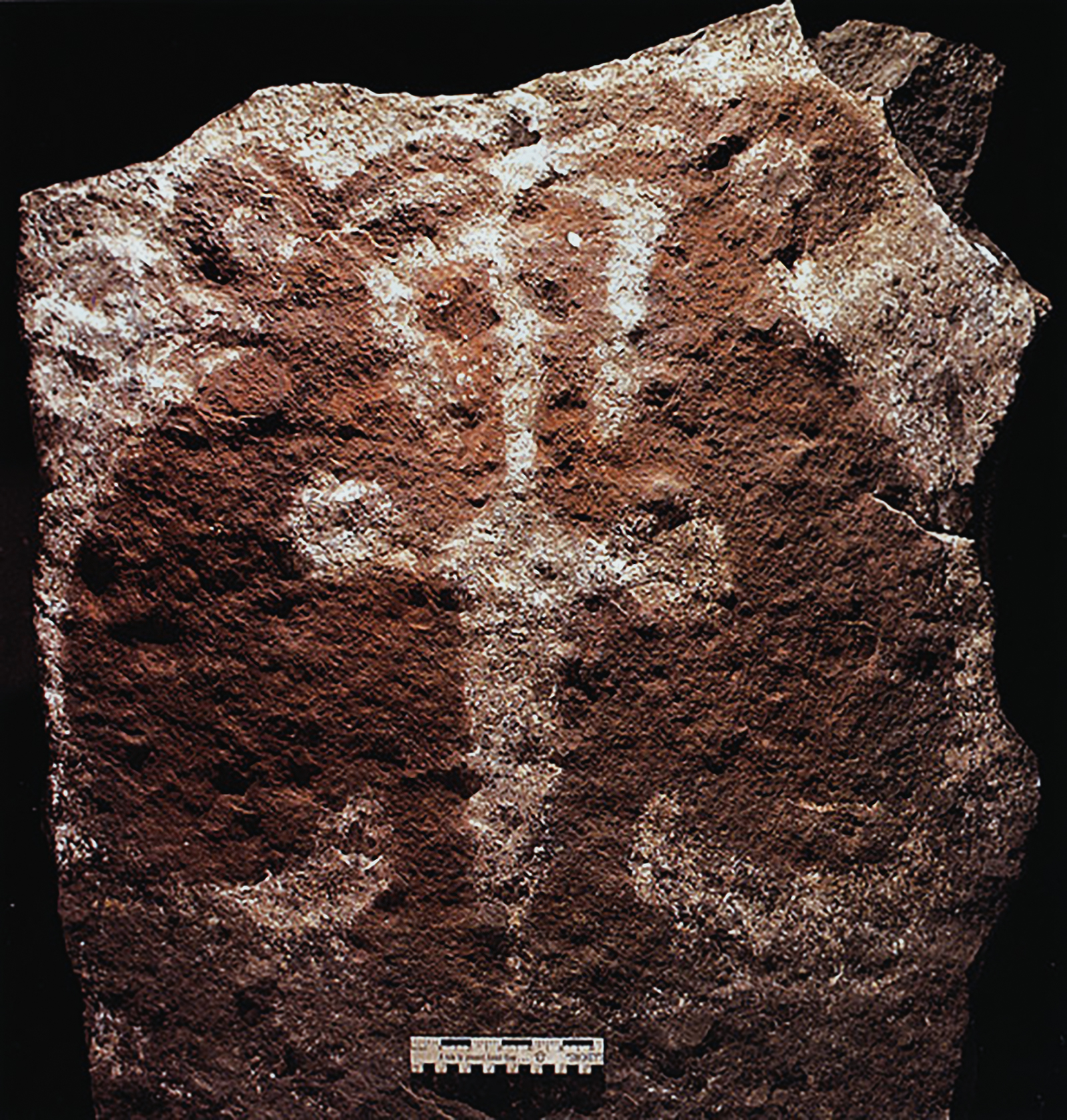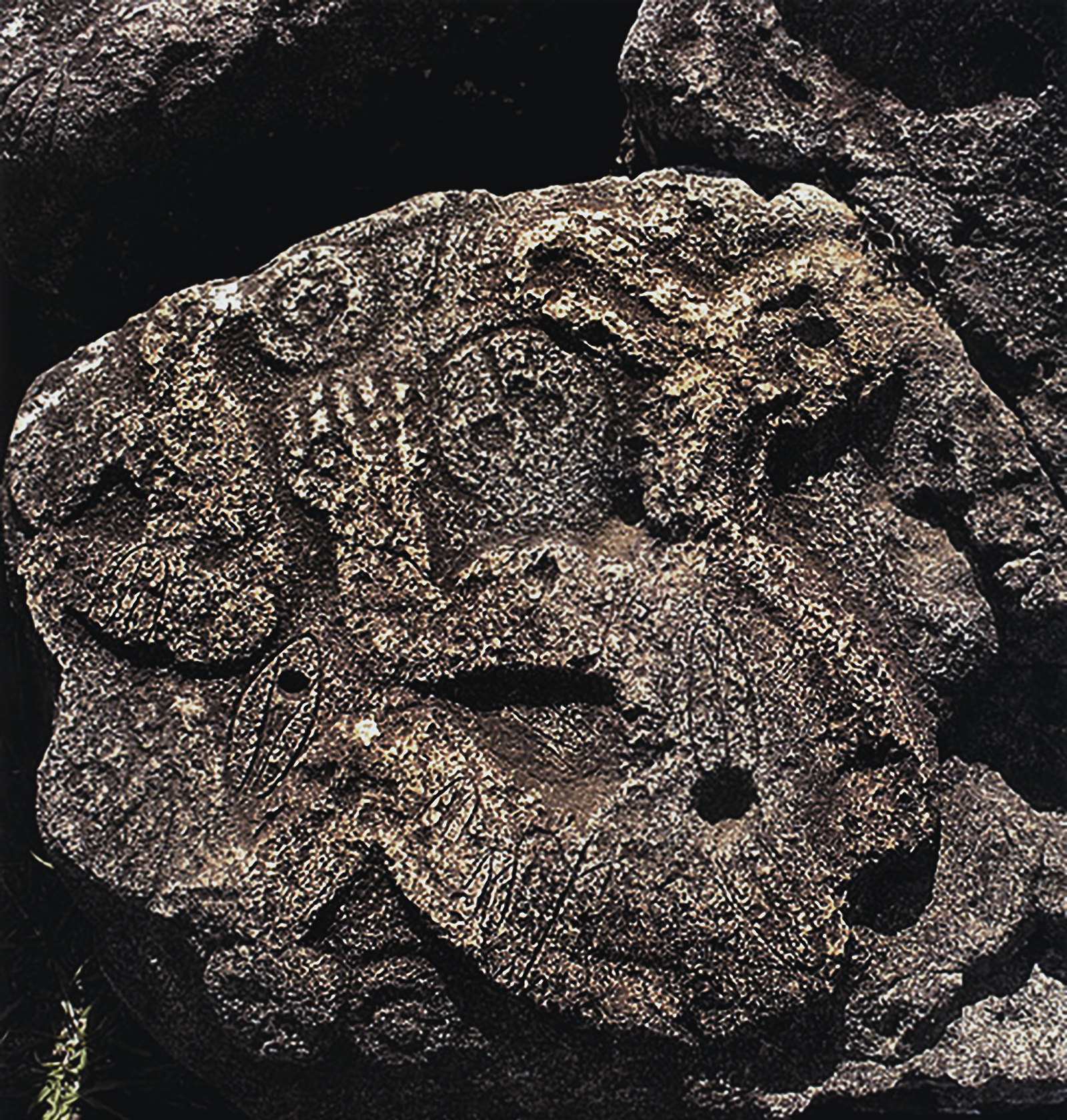



A paramount chief - 'ariki mau' - held the original power in Rapa Nui society, as was typical throughout Polynesia. Over time, the chief's omnipotence declined (possibly as a result of ecological stresses), and the secular power on the island was seized by a warrior class, called 'matatoa', whose emblem was the Birdman. The result was a decline in the old religion of ancestor worship and an increase in acts of warfare. At this time, statue making appears to have ceased, and the birdman cult, expressed primarily through the rock art petroglyphs, came into being.
Motu Nui is the largest of three islets just south of Easter Island. Motu Nui is the summit of a large volcanic mountain which rises over 2,000 meters from the sea bed. It measures 3.9 hectares in land area and is the largest of the five satellite islets of Easter island. It is one of three islands that is closest to Point Nemo, the place in the ocean that is farthest from land. Motu means "island" in Rapa Nui language, and there are two smaller motus located nearby: Motu Kao Kao (a sea stack, rising around 20 meters (65 feet) above sea level) and Motu Iti (near Motu Nui).

In the Rapa Nui mythology, the deity Make-make was the chief god of the birdman cult, and the other three deities associated with it were Hawa-tuu-take-take (the Chief of the eggs, a male god), his wife Vie Hoa, and another female deity named Vie Kenatea. Each of these four also had a servant god who was associated with them. The names of all eight would be chanted by contestants during the various rituals preceding the egg hunt.
Contestants were men of importance on the island. Each contestant would appoint one or sometimes two hopu (other adult men of lesser status) who would actually swim to Motu Nui carrying provisions in a bundle of reeds called a pora under one arm and await the arrival of the terns, hoping to return with the first egg. Meanwhile, their tribal sponsors, the contestants, waited at the stone village of Orongo. The race was treacherous, with hopu facing the potential threat of sharks, drowning and cliff falls.
Once the first egg was found, the finder would go to the highest point on Motu Nui and call out to his benefactor on the main island "Go shave your head, you have got the egg." The cry would be transferred vocally from the shore to the cliff to the village. The unsuccessful hopu would then collectively swim back to the main island while the egg-finder would remain on Motu Nui and fast. Then, he would swim back with the egg secured inside a reed basket tied to his forehead. On reaching land, he would climb the cliff and present the egg to his patron, who would have already shaved his head and painted it either white or red.
This successful contestant (not the hopu) would then be declared tangata-manu, would take the egg in his hand and lead a procession down the slope of Rano Kau to Anakena if he was from the western clans or Rano Raraku if he was from the eastern clans. The new tangata-manu was entitled to gifts of food and other tributes (including his clan having sole rights to collect that season's harvest of wild bird eggs and fledglings from Motu Nui), and went into seclusion for a year in a special ceremonial house. Once in residence there he was considered tapu (sacred) for the next five months of his year-long status, and allowed his nails to grow and wore a headdress of human hair. He would spend his time eating and sleeping, and would be expected to engage in no other activity.
The Birdman cult was suppressed by Christian missionaries in the 1860s. The origin of the cult and the time thereof are uncertain, as it is unknown whether the cult replaced the preceding Moai-based religion or had co-existed with it. The researcher Katherine Routledge was able to collect the names of 86 tangata-manu.

(Above right) Birdman Motifs and Makemake Faces from the court area of Mata Ngarau, Orongo.
→ Subscribe free to the Bradshaw Foundation YouTube Channel
→ Easter Island / Rapa Nui Index
→ Easter Island / Rapa Nui Introduction
→ Sentinels in Stone
→ The Birdman Motif
→ The Geography of Rapa Nui
→ Sea Creatures
→ Designs Motifs
→ Dr Georgia Lee
→ iLecture
→ Thor Heyerdahl
→ Bradshaw Foundation
→ Rock Art Network
